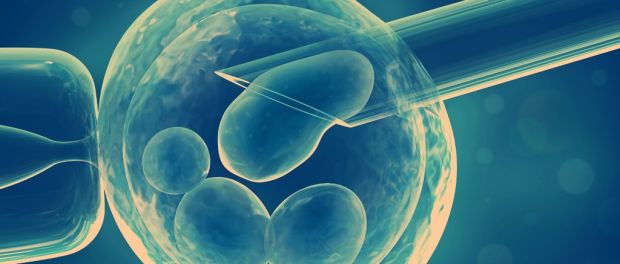3 Person IVF and Society
It’s been 2 weeks since I attended the World Science Festival. I was going to create a post about how wonderful it was, but if you Google, tweet, search, etc., you’ll be able to corroborate that story. Instead I decided to focus my attention towards a panel I attended called, “Designer Genes: Fashioning Our Biological Futures”. I should lead by saying that the title of this panel is a bit sensational. When most people think of “designer genes,” what probably comes to mind is “I want my kid to have Angelina Jolie’s eyes, and Lupita N’yongo’s skin, and Elon Musk’s brain.”
So, I’ll explain what 3-person IVF, more accurately known as, mitochondrial transfer, is.
Mitochondrial diseases are caused by mutations that happen in the mitochondrial DNA (mDNA). They effect every cell in the body except for red blood cells, and can be debilitating for a child born with one. The way in which these diseases can present themselves can range from minor to severe, and they are passed from mother to child.
Mitochondrial transfer would allow parents an opportunity to take the nuclear DNA from the mom, sperm from the father, and mitochondrial DNA from a healthy donor to come together and produce a baby, hopefully with no mDNA disease issues.
The panel I attended was meant to explore the possibilities of this type of technology and the social implications of such children in the future. I’ll tell you right now there is a part of me cheering this future on! But I will also say that I am a bit concerned with the social implications part.
In the year 2014, when lots of people start talking about genetically engineered babies or babies created in a lab, and our brains shift over to those features I mentioned before, like having Elon Musk’s brain. We also think about the history of eugenics and how that was a science that was manipulated and used to alter the course of human history in a disturbing and heinous way. Most people know about the ways in which Hitler applied eugenic practices, but are unfamiliar with the number of women in the US that were forcibly sterilized, or the birth control testings that were done on the island of Puerto Rico, the sterilization laws that are still on the books in many states, etc.
Why am I bringing up these types of practices when discussing fertility treatment? Because I believe that when we don’t learn from the past, we repeat it. I want to be clear that the issues I am bringing up are not to say that I believe reproductive technology should in anyway be hindered, but this is more like an post that seeks to bring attention to reproductive policy. We are still dealing with the fall out of many of these “policies” that ruined lives, that literally placed a value and price tag on a type of existence.
Right now, mitochondrial transfer treatment in the US is limited to animal trials. My guess is because the policy makers don’t want to deal with the policy issues. It’s complicated. If you are familiar with issues of reproductive justice in the US, you already know it’s atrocious on many levels. Shameful, even. Parents dealing with fertility treatments where a surrogate or donor egg is involved can easily be thwarted and thrown into years of legal cases if the donor or surrogate changes their mind, if the parents decide to divorce, etc. Many states do not recognize the contracts that are drawn before the procedure is done, so the decision is left up to judge and jury.
I won’t try to completely deconstruct issues reproductive justice within the US in a single blog post, but my goal is to help draw attention to the fact that the policy needs to figure out how to catch up with the technology. Otherwise, we run the risk of repeating grave mistakes, allowing a single person or small group of people to define “what is better,” and who has a right to the treatment (that’s a big one because even if it were allowed in the US, it is cost prohibitive). This is also an issue of women’s reproductive rights and freedom, maternal health care, etc. The future of genetic science and technology brings about all the concerns that we’ve been wrestling with for decades!
In the panel, the brilliant and knowledgeable, Nita Farahany, glosses over the subject of the ethics too nonchalantly for my tastes. She acknowledges and offers a thorough explanation for why the public tends to associate ‘eugenics’ with mass policies that lead to sterilization or more foul practices, but seems to neglect to discuss that these sentiments regarding what’s more worthy or healthy are ever-present in our every day reality. Farahany says there is no need to worry about these types of issues occurring again because the scientists ” understand the science,” as if that means they are infallible. I don’t like this. Don’t get it twisted, lady! There was brilliant science done then.
How many times do I need to utter the words, SCIENCE DOES NOT EXIST OUTSIDE OF CULTURE? Or should I say, ‘Science does not exist in a vacuum?” It is understood and interpreted in relation to its context. The context, in this case, is about the human condition, which is so ridiculously and wonderfully complex, that to make light of how we interface, understand and react to this type of technology is to dismiss our unique human experiences. When you hear this issue discussed, people are concerned with losing diversity, increases in class dichotomy, inclinations towards enhancements instead of correction, among other issues. Valid concerns, right? But I think what is at the heart of these concerns is the question, “where does it end?” “Who defines ‘better’?”
I LOVE science with all of my heart and soul, and so I think it does no good to misrepresent science as the end all be all. Science is interested in knowledge. It is not meant to dismiss the concerns of the public because they lack scientific literacy! In fact, this is all the more reason that I feel science has an obligation to communicate intention, possibility, address those concerns, and work to help develop policy. The concerns of the people, should be the concerns of the representatives, and if we don’t have a scientifically literate society (which I argue that we don’t), it’s hard to have scientifically literate leaders or policies.
Not to mention, scientists have their politics, too. They are allowed to “understand the science” but offer a different interpretation, disagree with it, and get funded for it from wealthy scientifically illiterate backers with distasteful, self-serving intentions.
So, with all due respect, Farahany, it is naive to downplay the significance of the matter.
What I will say, positively, about the whole panel, is that the goal is healthy babies and a healthy society. I doubt that most parents who would be seeking this type fertility treatment are attempting to select traits for some kind of bio-social advantage such as a specific eye color, skin color, or ability to run like a cheetah. These are things that we kind of do already. We start dating a person, and maybe imagine how our chromosomes would look all scrambled together in the form of a chubby, healthy baby. I suppose, you could take it a step further and start bringing some Punnet Squares with you on early dates so that you can begin to do the math. Or head to a donor facility to get what you want, then go forth with probability. In any case, the goal is a healthy child, and I believe if there are ways to facilitate that, then wonderful.
I just hope that it is also understood that these types of advancements in technology do NOT stand alone. Historical, social, biological, and legal precedents must be considered to help create the most supportive and holistic environment for development.
But you don’t have to take my word for it. Decide for yourself! Grab a coffee, a notebook, and tuck into this panel!
http://www.worldsciencefestival.com/2014/05/designer-genes-fashioning-our-biological-future/



I think that everything published made a lot of sense.
However, what about this? what if you composed a catchier title?
I mean, I don’t wish to tell you how to run your blog, but suppose you added a title that grabbed a person’s attention? I mean 3 Person IVF
and Society | The Rockstar Anthropologist is kinda vanilla.
You could look at Yahoo’s home page and see how they create news headlines
to get people to click. You might try adding a video or a related pic or
two to get readers interested about everything’ve written. Just my opinion, it might make your website a little bit more interesting.
Thanks for your feedback! I purposely stay away from purely sensational titles. If you read because you’re interested and want to engage- awesome! If you don’t, that’s cool too. There are videos and related info included in most posts I write. I’ll keep your thoughts in mind as we make changes in the future.